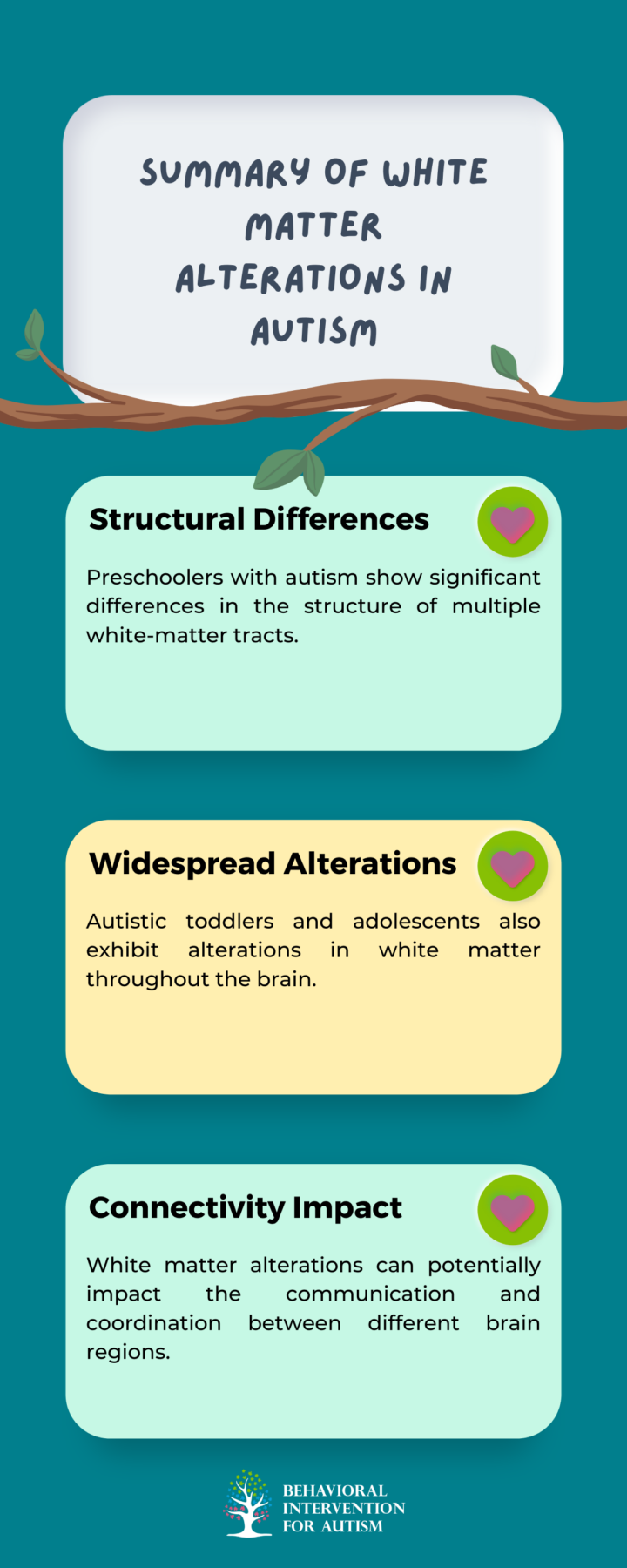
Table of Contents
Exploring the neurobiology of autism, it becomes evident that there are notable brain variances in individuals with Asperger’s syndrome, a form of autism. These variances can help shed light on the unique cognitive and behavioral characteristics observed in individuals with autism. We will explore two important brain variances: differences in grey and white matter, as well as variations in hemispheric symmetry.
Grey and White Matter Variances
Research has shown that people with Asperger’s syndrome exhibit significant differences in grey and white matter compared to individuals without autism. Grey matter refers to the tissue in the brain responsible for processing information, while white matter consists of the nerve fibers that enable communication between different regions of the brain.
In individuals with Asperger’s syndrome, there is a notable reduction in grey matter in fronto-striatal and cerebellar regions compared to neurotypical individuals. These brain regions play a crucial role in various cognitive functions, including executive function, motor control, and social cognition.
Additionally, differences in white matter connectivity have also been observed in individuals with Asperger’s syndrome. White matter alterations can impact the efficiency of communication between different brain regions, potentially contributing to the challenges individuals with autism face in processing and integrating information.
Hemispheric Symmetry Differences
Another brain variance observed in individuals with autism is a slight increase in hemispheric symmetry compared to neurotypical individuals. Normally, the two hemispheres of the brain exhibit some degree of asymmetry, with each hemisphere having specialized functions. However, in autism, there is a tendency towards more symmetry between the hemispheres.
This increased symmetry can have implications for language processing and handedness. Reduced leftward language lateralization, which refers to the dominance of the left hemisphere for language functions in most individuals, has been observed in individuals with autism. This variance may contribute to the higher prevalence of left-handedness among individuals with autism spectrum disorder (ASD).
Understanding these brain variances in individuals with Asperger’s syndrome provides significant insights into the unique cognitive and behavioral traits associated with autism. These differences in grey and white matter as well as hemispheric symmetry contribute to the diverse ways individuals with autism perceive, process, and interact with the world around them. By gaining a deeper understanding of these variances, we can promote acceptance and support for individuals with autism, enabling them to thrive and reach their full potential.

Structural Variances in Autism
Exploring the differences in brain structure between individuals with autism and those without reveals several distinct variances. These structural differences offer insights into the unique characteristics of the autistic brain. We explore two specific types of variances in the brain: folding variances and connectivity variances.
Folding Variances in the Brain
One of the notable variances in the brains of individuals with autism is the increased folding in specific regions compared to non-autistic brains. These folds, known as sulcal pits, play a crucial role in various cognitive functions. However, deeper sulcal pits in the brain have been associated with more significant impacts on language production.
The increased folding in certain regions of the brain can affect the organization and communication between different areas, potentially influencing how individuals with autism process and produce language. This variance in folding patterns may contribute to the unique cognitive strengths and challenges observed in people with autism.
Connectivity Variances in the Brain
Connectivity variances in the brain refer to the differences in how different regions of the brain communicate and interact with each other. People with autism frequently show increased connectivity over short distances and decreased connectivity over long distances in their brains.
Short-range over-connectivity refers to increased connections between neighboring brain regions, while long-range under-connectivity refers to reduced connections between more distant brain regions. These connectivity variances can impact tasks that require combining information from different brain regions, such as social functions and complex motor tasks.
The altered connectivity patterns in the autistic brain may contribute to difficulties in social interaction, communication, and the integration of information from multiple sources. Understanding these connectivity variances can help researchers develop targeted interventions and therapies to support individuals with autism in these areas.
Studying the structural variances in the brains of individuals with autism provides important insights into the neurological foundations of this condition. These differences in brain folding and connectivity reveal the unique cognitive traits and challenges faced by those with autism. Ongoing research in this area promises to enhance our understanding and improve support for individuals with autism and their families.

Physiological Variances
Understanding the physiological variances in the brains of individuals with autism can provide insights into the unique characteristics of the condition. We will examine two important areas of physiological differences: variations in the hippocampus and amygdala, as well as growth differences in the cerebellum and cortex.
Hippocampus and Amygdala Variances
Research has shown that children and adolescents with autism often exhibit differences in the size and structure of the hippocampus and amygdala. The hippocampus, which plays a crucial role in memory and learning, is frequently found to be enlarged in individuals with autism. On the other hand, the size of the amygdala, involved in emotional processing and social behavior, varies between individuals with and without autism.
Some studies suggest that autistic children may have enlarged amygdalae early in development, although the difference in size may level off over time. The exact implications of these variances in the hippocampus and amygdala are still being investigated, but they provide valuable insights into the neurological basis of autism.
Cerebellum and Cortex Growth Differences
Another area of physiological variance in autism is observed in the growth patterns of the cerebellum and cortex. Research has shown that some infants who are later diagnosed with autism exhibit unusually rapid growth in certain brain regions. Specifically, there is significant expansion of the surface area of the cortex between 6 and 12 months of age.
During the second year of life, brain volume increases at a much faster rate in autistic children compared to their non-autistic peers. This accelerated growth in the cortex may contribute to the unique cognitive and behavioral characteristics associated with autism.
Additionally, individuals with autism often have reduced brain tissue in specific regions of the cerebellum. The cerebellum, traditionally associated with motor control, is now understood to play a role in cognition and social interaction as well. The variances in the cerebellum may contribute to the challenges individuals with autism face in these areas.
Understanding the physiological variances in the hippocampus, amygdala, cerebellum, and cortex provides insights into the neurological underpinnings of autism. By unraveling these differences, researchers can further explore the link between brain structure and the unique characteristics of individuals on the autism spectrum.
Fluid and White Matter Variances
Understanding the brain variances in individuals with autism is a complex and ongoing area of research. We will examine the differences in fluid and white matter associated with autism.
Cerebrospinal Fluid Levels
Cerebrospinal fluid (CSF) surrounds and protects the brain and spinal cord. Studies have indicated that individuals with autism might have higher levels of cerebrospinal fluid than those without the condition. This excess fluid can lead to an enlarged head, a common feature in autism. Notably, this increased CSF can be identified as early as 6 months old and may continue into adulthood, up to age 39.
The table below summarizes the findings regarding cerebrospinal fluid levels in individuals with autism:
- Excess CSF – People with autism may have excess cerebrospinal fluid compared to non-autistic individuals.
- Timing of Detection – Excess CSF can be detected as early as 6 months of age and can persist up to age 39.
- Enlarged Head – The presence of excess CSF can contribute to having an enlarged head, which is often observed in individuals with autism.
White Matter Alterations and Autism
White matter is essential for linking various brain regions via bundles of long nerve fibers. In individuals with autism, white matter has been found to show significant alterations. Even in preschoolers with autism, structural differences in multiple white-matter tracts have been observed. These changes in white matter are also found in autistic toddlers and adolescents, suggesting widespread brain alterations.
Below summarizes the findings regarding white matter alterations in individuals with autism:

Understanding the fluid and white matter variances in individuals with autism is vital for gaining insights into the underlying neurological differences associated with the condition. Ongoing research in this field aims to further unravel the complexities of autism and contribute to the development of more effective interventions and support for individuals on the autism spectrum.
We, Behavioral Intervention for Autism, offer top-notch ABA therapy in Florida to help address these challenges and support those in need.
Contact us today to learn how our dedicated team can assist you or your loved ones with personalized autism services.
- 9 Common Obsessions of Children With Autism You Should Know - February 25, 2025
- What is Neurodiversity? A Guide to Embracing Differences - February 25, 2025
- Understanding Hyperfocus in Autism: What It Means and Why It Happens - February 25, 2025
